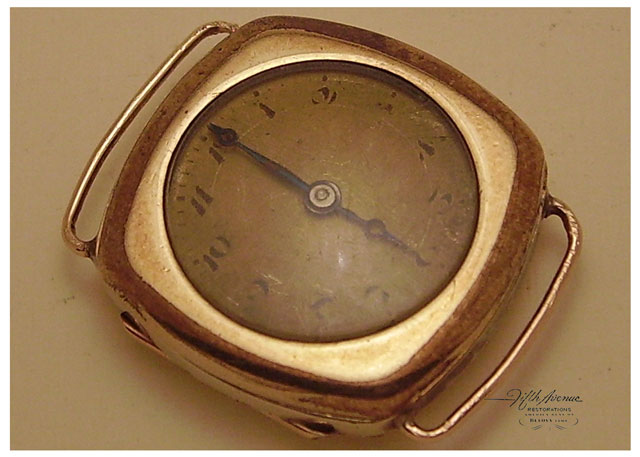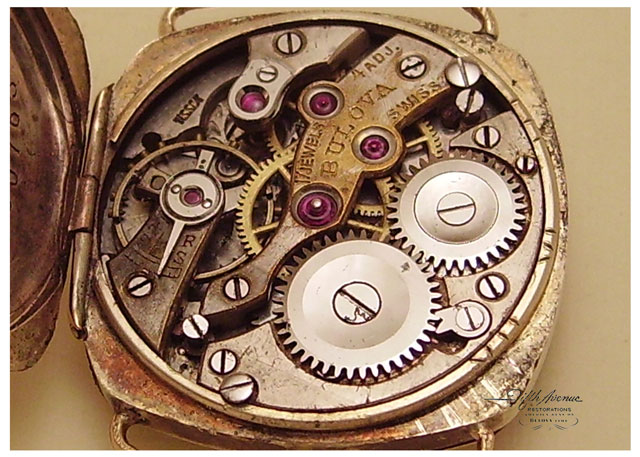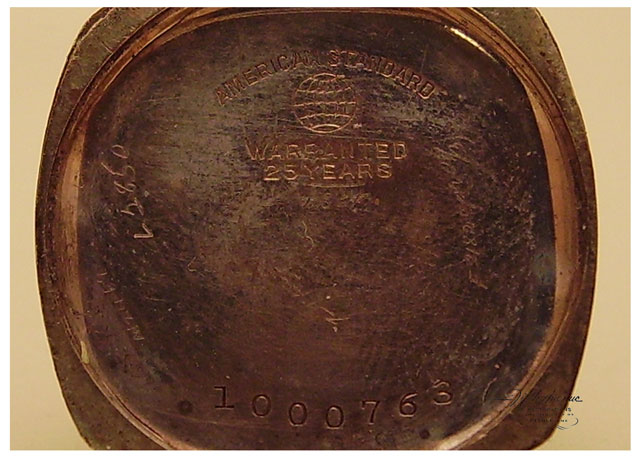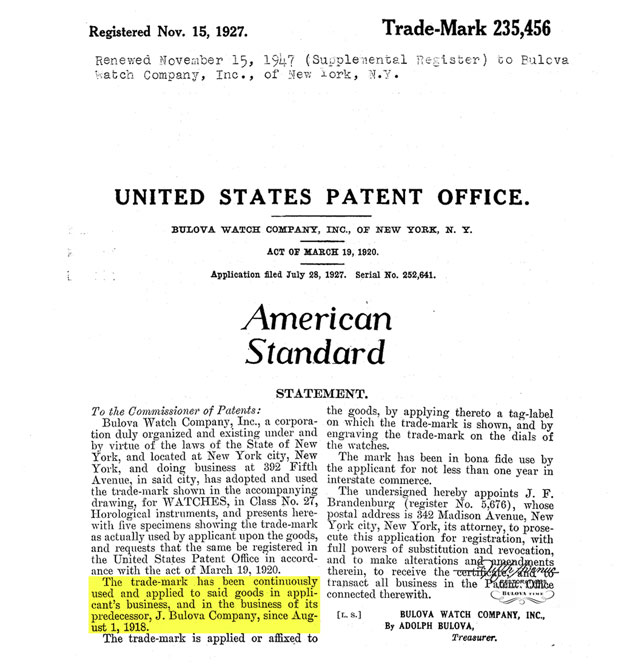2 piece Case measures 27.5mm lug to lug x 19mm non inclusive of the Crown using Calipers.
Unsigned Dial shows Black printed Arabic numerals.
Hour and Minute Hands are Fusaux style.
Movement bridge is Hand signed Bulova, plate is stamped Tissot.
Hinged Caseback is stamped as shown.
Date of manufacture is speculative.
http://www.mybulova.com/node/4960?page=1
enjoy.




Interesting. That would be a wierd break between serial numbers for two different cases/production runs. If American Standard has set up a run of one case w/ a range of SN's, and a different case run w/ other numbers, I certainly wouldn't think their range break point between the two runds would start at 1000763.
I don't think it does. As a matter of strong opinion, and following suit of production methods of other watch makers, bicycle makers, vacuum machine makers, jewelry makers, candy bar manufactures, etc..., I think they must be associated with production runs at minimum. Otherwise how would those stamping the cases know which numbers to use? We don't see duplicates in any of these case SN's. Models could be assigned SN's in order , as evidenced by most other case examples BUT there could be breaks in sequential ranges between models. This one outlier we are discussing doesn't prove its out of order. Its just a weird break. One example we would all like to explain.
There could be three "consecutive ranges" of serial number assigned as below:
"Joe (or machine, or factory, or floor of factory, or contracted case maker, etc...) make those Lone Eagle Cases"with numbers 1110000 to 1119999.
Mike (or machine, or factory, or floor of factory, or contracted case maker, etc...) make those President cases with number between 1120000 to 1129999.
Jane (or machine, or factory, or floor of factory, or contracted case maker, etc...) make those Lone Eagle Cases with numbers between 1130000 to 1139999.
This would account for a break in sequential ranges between models.
I'm sure Bulova didn't say:
Joe, you make Lone Eagle cases using serial number 1110922. 1110870 and 1112009.
Mike, you make President cases using serial numbers 1114299. 1110788 and 1111603.
Jane, you make Lone Eagle cases using serial numbers 1114298. 1110787 and 1112008
It's not like they said, "OK everyone, lets start making these cases and stamp them with what ever serial numbers you want". Groups of numbers- in ranges- were assigned, and there was orchestrated order to these assignments, as evidenced by no duplicates. In our database, many, if not most case SN's ranges have a correlation with case types/models, and we have an interesting outlier here which we are now discussing. We have other "sequential ranges" between models which are non-sequential within one model, but that's explained by my "Joe, Mike, Jane" scenario.
With or without seeing any look-up tables or Bulova production records or "hard evidence" if you will - I'm pretty sure Bulova followed the industry-wide or even manufacturing-wide standard protocol for production versus come up with some numeric system of there own AND then talk their various case maker contractors to adhere to this non-standard system.
It flyes in the face of manufacturing protocol acrosss the board. But still- how do we explain this one case style number break?
At minimum, serial number ranges are assigned to production runs. It is the world wide SOP, otherwise, these numbers make little sense. They could also have other meanings- like the first digit corresponding to year of production with a decade, as we see is true, and still follow this assigned range for production.
In reply to A quick thought, maybe the by mybulova_admin
To follow up on this though. An example if I may:
Factory A in 1920: build watch 100076, and added the factory code 2 at the end.
Factory B in 1921: build watch 100076 and added the factory code 3 at the end.
Thus the first watch was the 76th watch built at Factory A and the second watch was also the 76h watch build at Factory B.
Certainly plausable and would explain how two different watches styles could have very similar case serial numbers.
In reply to That would need ten by bobbee
Not neccessarily if a factory was designated 2 or more numbers.
I reaching out on a limb here and throwing things out there to see what sticks. I'm also reviewing all the early '10xxxxx' and '11xxxxx' case numbers to see if I can find a pattern.
I still like Will's idea of factory/workman/station. For quality control porposes, having a meaningful serial number that pointed to the guy/gal/machine on the assembly, line in case of a fault, would certainly help narrow down the issue and correct it.
In reply to I'm still thinking all this by William Smith
